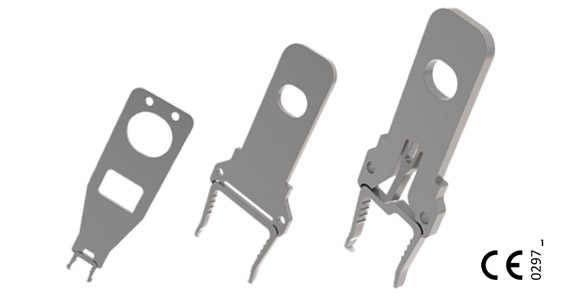Patient Information: Hand & Foot
A fully grown human body has about 206 bones. The reason for the approximate number is the bones that will only grow together in the course of our lives. Half of the bones of an adult human are in our hands and feet. There are 26 bones in the foot and as many as 27 bones in the hand, making a total of 106 bones. The large number of bones within the limbs suggests the importance and, more importantly, the complexity of each limb. Another reason to take care of our hands and feet.
If we take a closer look at our feet, they are usually only seen as a tool to reach our desired goal. Yet our feet are a masterpiece of complexity and have about 30 joints, 30 muscles and over 100 ligaments and tendons in just one foot. With each step, our feet support and cushion our own weight and the additional weight we carry with us. Despite the complexity, the permanent load, the too tight as well as poor choice of shoes, our feet allow a lot and forgive minor mistakes.
With the ravages of time, the calcium content of our bones decreases, leaving them unstable and brittle. Everyday efforts are viewed in a different light when the limbs suffer from discomfort or pain. One of the more common ailments is osteoarthritis. In this case, the protective cartilage tissue has worn away due to age, leaving the individual bones to rub against each other without protection. Possible pain can also be caused by bones growing together involuntarily or by cracks that have developed, up to and including a fracture.
Please inform your doctor in case of long-term as well as unusual discomfort or pain and together try to alleviate or solve the cause by conservative methods. If conservative methods are not effective or do not solve the cause, the only remaining solution is surgery on the hand or foot. Don’t let this scare you away, with today’s tools, surgery can be performed with minimal complications. In certain cases, a bone clamp will then be used.
Note: Please always consult a specialist before undergoing any procedure and seek a second opinion if necessary.
Z-Staple (bone staple)

What is a bone staple?
A bone staple is a medical implant intended for internal bone fixation in bone fractures, fusions or osteotomies in the ankle, foot, wrist and hand.
When is a bone staple used?
Z-Medical bone staples (Z-Staples) are intended for fixation of bone fractures or for bone reconstruction.
- Fixation of bone fragments or small fractures
- Fracture fixations in hand and foot
- Osteotomies in hand, foot or ankle joint
How does the bone staple get inserted?
Bone staple treatment is performed under general anesthesia. After an incision in the hand or foot, the tissue is spread with an instrument. The Z-Staple is a connection between an implant and the instrument designed for it. Two drill holes are integrated within the instrument to replace a drill template. Drill holes are drilled into the bone using a drill wire. The clamp is then pressed into the drill holes until it is flush with the surface. The remaining instrument is broken off and removed from the implant by a simple lateral movement.
How does the bone staple work?
Holding the bone or the individual segments together is based on the principle of compression. The clamp has a smaller distance than the drill holes and must therefore be inserted into the drill holes with increased force. At the same moment, the staple wants to return to its original shape whereby the two feet of the staple compress the bone or the individual segments. Because of the steps and barbs, the staple remains firmly seated in the drill holes.
What are the advantages of the system?
- High and sustained compression forces
- High anchorage
- Easier as well as safer application
- No additional instruments required for insertion
Precautions
- Please follow all the instructions your doctor discusses with you and express your questions to your doctor before and after the surgery!
- If complications occur after the operation, which are related to the surgery or the implants, contact your doctor immediately!
- Avoid strong physical activities as well as stress directly after the implantation.
- Have your doctor inform you about possible side effects of anesthesia (e.g. nausea, vomiting, dental injuries, etc.).
Lifetime
The bone staple is an implant with the primary function is to help support the healing process after surgery. Fusion should occur within 12 weeks after surgery. After healing, the implant must be removed. If there is too high a risk with further surgery, the medical device may remain implanted for life. This must be discussed individually with the attending physician.
Material
The Z-Staple is made of a medical titanium alloy TI6AL4V ELI. Titanium forms the bulk of the alloy, about 6% aluminum, about 4% vanadium and traces of remaining elements (iron, oxygen, carbon, nitrogen and hydrogen) which may have a total maximum content of <0.53%.

